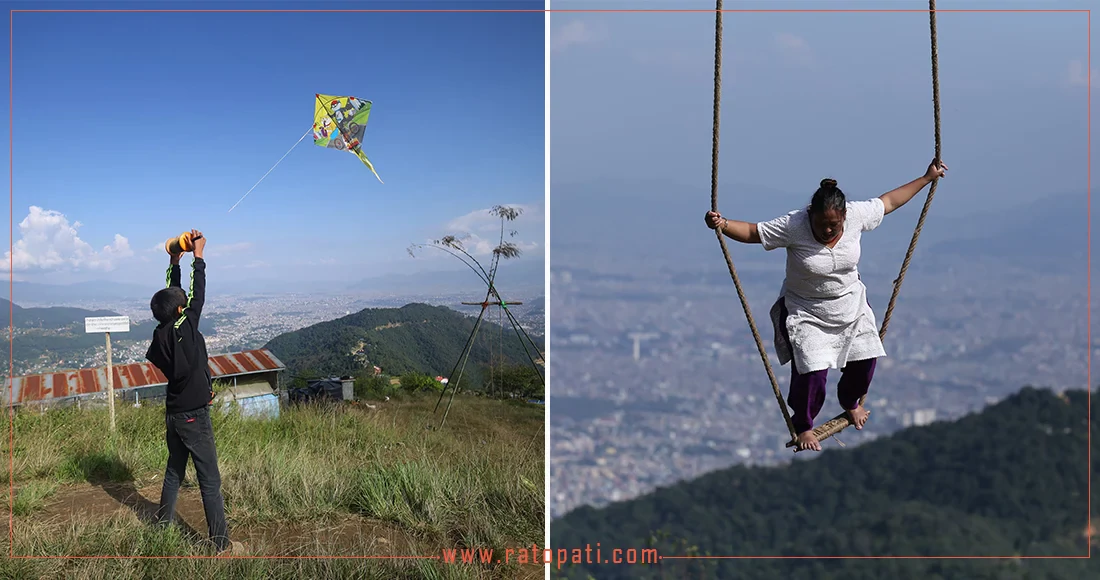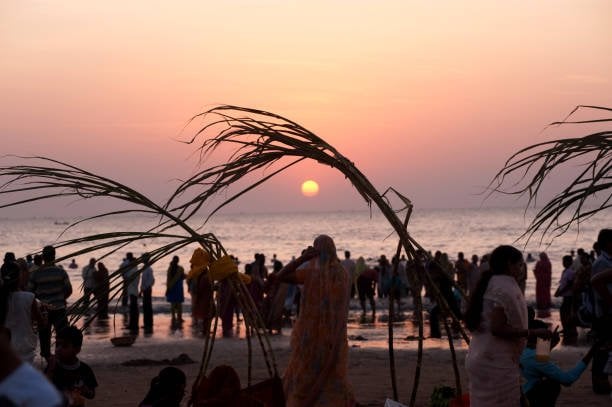Festivals as anchors of identity and community

Migration, as a key element of human development, continues to reshape societies, not only improving the livelihoods of millions of migrants and their families but also bringing about profound challenges in both origin and destination communities. This global and dynamic flow of people is an inevitable force, one that cannot be stopped but must be managed and understood better, especially within the context of rural Nepal and its cultural festivals like Dashain-Tihar.
Migration has its roots deeply embedded in the socio-economic conditions of the countries and communities it affects. As a prominent leader once remarked, "Just as a larger magnet attracts a smaller one, young people are naturally drawn to capitalist countries and cities where development is faster." In many cases, the slow pace of development in regions like Nepal has caused an exodus of the younger generation. Labor, one of the most valuable yet underappreciated resources in many underdeveloped countries, has become the cheapest commodity exported to developed nations. This explains the sharp rise in migration rates. If we aim to reduce the flow of migration, we must first focus on the development of rural communities. Once development begins in villages, the rate of outmigration slows, and those who have left may eventually return.
The Exodus and the Silent Villages
The above narrative aptly describes how the youth from rural Nepal are increasingly leaving their homes in search of better opportunities abroad. This mass migration has left once-bustling villages desolate and silent. Villages that were once filled with the sounds of sports and daily activities now find their fields overgrown with weeds, and the houses coated with dust and cobwebs. Streets that were once filled with the laughter and energy of youth now stand deserted. Even when death knocks on a villager’s door, finding enough young men to carry the funeral procession has become a challenge, requiring help from neighboring villages.

This phenomenon of youth leaving rural areas is not just a local trend; it is part of a larger global pattern. As the global economy shifts and labor markets adjust, rural communities around the world face similar challenges. However, the heart of the matter lies in the inability to create enough opportunities in rural areas, which results in people moving to cities or even countries abroad in search of better livelihoods. Yet, those who leave often do so with the hope of returning once they have gathered enough resources and stability for their families.
The Village as the Fountainhead of Human Society
Despite the mass migration, rural villages remain the fountainhead of human society. Those who leave are not gone forever; even as they settle abroad, the memories of their village continue to tug at their hearts. They may leave out of necessity, to shoulder the burden of family responsibilities, but the intention is always to return, eventually. After gathering the required capital and resources, the return destination for many is inevitably their village.
This longing to return to one’s roots was seen starkly during moments of national or global crisis. For instance, during the catastrophic earthquake that struck Nepal in 2015, many who had settled in urban centers or abroad rushed back to their villages, finding solace in the simplicity and safety of their rural homes, far from the vulnerable concrete jungles of the cities. Similarly, during the COVID-19 pandemic, many migrated back to their villages, seeking refuge from the urban areas that had become hotbeds of infection. The village, in these cases, was never a place that became foreign or alienated. It was simply underdeveloped relative to the urban centers, which drew people away temporarily.
Though the challenges of rural underdevelopment remain, the bond between the village and its people has not frayed. Villages are still the first places people think of when it comes to celebrating cultural festivals or finding peace. Villagers, despite being away for long periods, continue to contribute to the development of their homeland, sending money and resources whenever possible, often in the name of local development projects.
The deep connection that people maintain with their villages is especially visible during festivals like Dashain, when families come together, if not physically, then in spirit, through celebrations that transcend geographical barriers.
Dashain-Tihar: The Binding Force of Culture and Humanity
Despite global challenges and growing competition, culture remains a vital force that binds people together, transcending time, space, and even migration. Festivals like Dashain are instrumental in preserving these cultural connections, providing a vital thread that ties together generations, no matter where they are in the world.
Dashain, Nepal’s greatest festival, is not just a celebration of religion and tradition. It is a reflection of the human ability to adapt to nature and the environment. Dashain-Tihar and Chhath, as a festival, evolved out of the need for survival in an agricultural society. It became a celebration of life, an opportunity to balance resources, and a moment to come together in unity.
The practice of animal sacrifice during Dashain, for instance, was not originally a religious ritual but an economic and ecological necessity. Agriculture-based economies relied heavily on livestock, not just for milk or plowing fields but for everything from manure to leather. As anthropologist Marvin Harris explains, Hindu societies refrained from consuming buffallo because of their vital role in agricultural productivity. However, during the dry months following monsoon season (typically between Aswin and Kartik, Dashain’s festival period), there would often be a shortage of food to sustain these animals. In such times, it became necessary to sacrifice a portion of the livestock to ensure survival through the winter months.
Today, the practice of animal sacrifice persists in some regions, but the original economic logic has faded, replaced by cultural, religious, and political dimensions that have grown over centuries. The significance of Dashain has shifted from its roots in agricultural survival to a more symbolic celebration of prosperity, family unity, and cultural identity.
Dashain, Tihar and Chhath: A Cultural and Economic Exchange
Dashain, Tihar and chhath are not merely a festival of familial ties and religious observance. It also represents a significant cultural and economic exchange. During the festival, it is customary for family members to visit elders to receive tika and blessings. But this visit is never made empty-handed. Those who come to receive blessings bring gifts, and in return, they are offered food, money, and other forms of goodwill. The exchange is not just in material goods but in intangible elements like respect, love, and affection.
This exchange system, deeply embedded in the celebration of Dashain, reflects the broader patterns of economic and social behavior within Nepalese society. Even in a world where migration has become a dominant force, where families are scattered across countries and continents, the essence of Dashain manages to unite people. Those who cannot return to their villages during Dashain often recreate the celebrations in their new environments, maintaining the same customs and rituals that they would have observed at home.

For many Nepalese living abroad, Dashain, Tihar and Chhath provides a vital link to their cultural heritage, allowing them to reconnect with their roots, even from a distance. The festival becomes a way to honor traditions, share stories, and bond with other Nepalese communities in their host countries.
Migration, Development, and the Resilience of Culture
Migration, as a process, is deeply intertwined with the social and economic development of communities. It has brought opportunities and challenges alike to both rural and urban areas in Nepal. But amidst the flux of migration and the inevitable changes it brings, culture stands as a resilient force, uniting communities, both near and far.
Dashain, as Nepal’s greatest cultural festival, embodies this resilience. It brings families together, strengthens community ties, and offers a moment of reflection and celebration, no matter where one might be in the world. Whether it is through physical visits to the village or the recreation of cultural practices in distant lands, Dashain, Tihar and Chhath remains a testament to the enduring strength of Nepalese culture and identity in the face of migration and modernity.
As Nepal continues to navigate the complexities of rural development and migration, it is clear that festivals like Dashain will play an essential role in preserving the cultural fabric that holds the nation together, offering a bridge between the past, the present, and the future.
(The author is a researcher specializing in social-political studies and international relations.)


Leave Comment